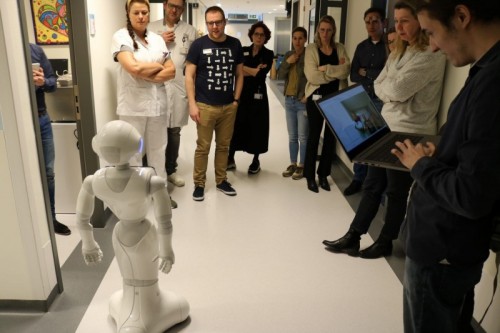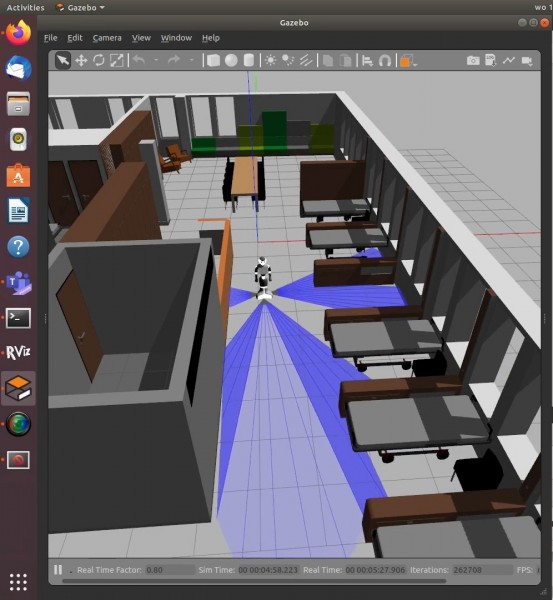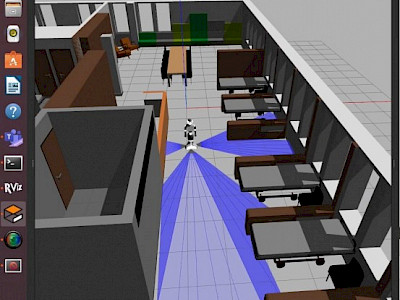Robot assistance in care
Care robots have been around for a while now, and there seem to be more and more opportunities to use them. An employee at the Catharina Hospital therefore wondered whether they could be used for day admissions, says Van Alphen: "During a day admission at the Cardiology department, a patient enters the Heart Lounge. They are welcomed and wait there for their treatment. Afterwards they come back here to rest before going home. A fairly smooth process, but with the staffing pressure and of course the risks during the pandemic, the question arose whether a robot could not assist by providing information and interacting. That is how the Robot4Care project started."

Care robots and great promises
The hospital, and other healthcare institutions, already had a Pepper-type healthcare robot. These were frequently purchased with great promise, explains van Alphen: "Robots are supposed to be the future for healthcare, but clearly lack robustness and modularity in their functioning to be of real value. This means that what they do is often a limited trick, so many of these robots end up in a broom closet. So our challenge was software-based; how do we ensure that Pepper can perform that assistive task better and independently on the ward? But also, how do we ensure that the control is adaptable, even by non-ICT people."
Virtual innovation with digital twins
The corona measures made on-site testing impossible, so the Robot4Care project switched to working virtually with digital twins. This turned out to be an unexpected blessing for the project, says Van Alphen: "It soon became clear that a fully functioning digital twin from Pepper would enable us to make the hardware function more robust with software improvements. An example is Pepper's LiDAR navigation, which limits how accurately the robot can move around the department. Students saw that they could adjust its parameters to make this much better. Even better, they saw the possibility of controlling the navigation from the digital twin, allowing the physical Pepper to perform the navigation task much more accurately."
Doing more with robots
Whereas digital twins in a smart industry application often help to gain more insight into the processes, for robots they offer opportunities for more robust control. The project is now looking at ways of retrieving even more data in the digital twin: "We want to place more physical sensors so that the robot can better understand what kind of environment it is in, such as a radar that can pick up environmental sounds and send them to the digital twin. Data that allows the 'brain' function of the digital twin to do its job better. This allows you to better assess what kind of situation Pepper will be in and also makes the interaction more human. In other words, we're enhancing the cognitive function of the robot with the digital twin.

Digital Twin Academy
There is still a lot of work to do to really turn Pepper into the dream assistant, but Van Alphen is hopeful now that testing can be done on location again. The link between Digital Twin and robot has been made and now it can be optimised. The Robot4Care project is run by the High Tech Embedded Systems chair and is part of the larger project Digital Twin Academy, which aims to make digital twins accessible to a wider public through applied research and knowledge sharing. Several other Fontys lectorates and institutes contribute to Robot4Care, such as the lectorate Human & Health. The application of robotics in healthcare is discussed Fontys-wide to bring technology and people together in the right way. More information about the Digital Twin Academy project can be found at: fontys.nl/dta
Digital Twin Academy is an Interreg Euregio Meuse-Rhine (EMR) project. The programme is financed by the European Regional Development Fund and is a cooperation of various authorities, research and education partners and partners from the business world.
